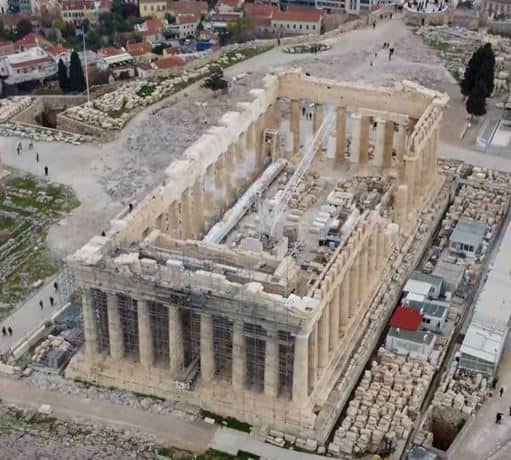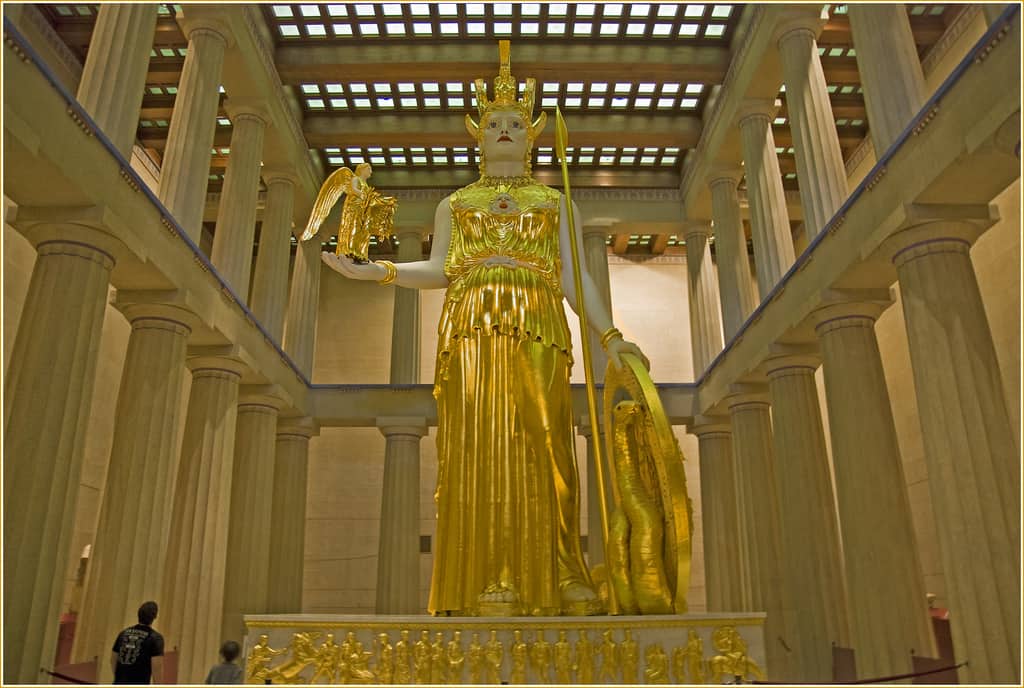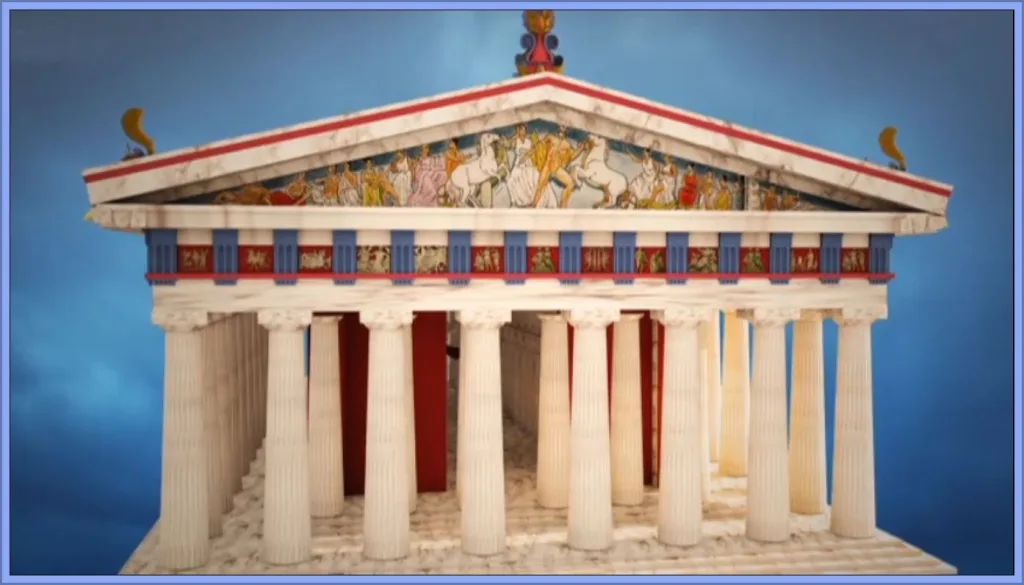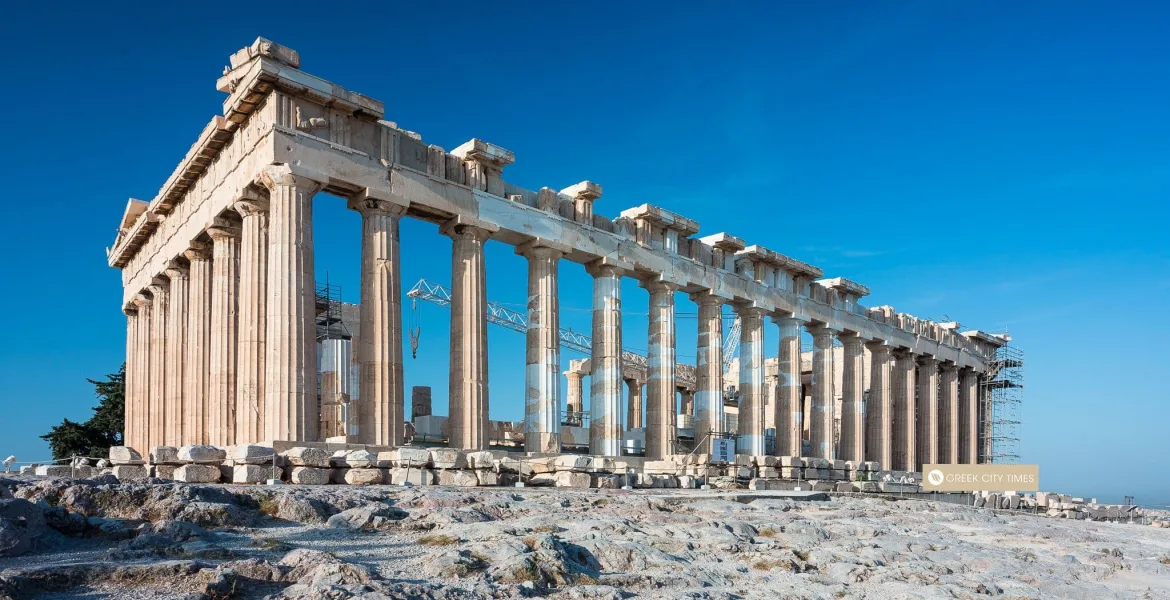The ancient Greek Parthenon is one of the few remaining architectural marvels of our ancestors, and here are 14 facts about it.
Often considered one of the most important symbols of the Ancient Greek world and the democracy of Athens, the Parthenon has dominated the Athenian skyline for more than 2000 years. Originally serving as a temple to a prominent Greek goddess, the building took around a decade to construct, beginning in 447 B.C. Also, it is considered one of the most significant structures on the Acropolis, one of the world's precious treasures.
The Ancient Athenians viewed the Parthenon as a symbolization of their victory over the invading Persians. Today, it continues to wow visitors from all over the world, even though it’s a shell of what it once was, and there are many lovely hotels nearby promising a relaxing vacation. Keep reading to find out some Parthenon fun facts.
Related: Athens in Two Days.
14 Parthenon Was Perfect Golden Rectangle
People have been studying the proportions of the Parthenon, a prime example of classical architecture, for centuries. The Parthenon's exterior dimensions are said to form a perfect golden rectangle, supporting the theory that it was built to extremely precise measurements following the sacred geometric ratio. The term "perfect golden rectangle" was coined by the Greeks to describe a structure with the "golden ratio or phi" dimensions, and it has long been thought to be the most aesthetically pleasing structure in history.

13 Parthenon Is The Crowning Glory Of Doric Architecture
Most modern architects and historians view the Parthenon as the finest example of ancient Greek architectural brilliance and its harmonious combination of elegance and power. It is an iconic piece of architecture created by the architects Ictinus and Callicrates under the direction of the sculptor Phidias, the man behind the ratio "phi." Furthermore, the temple is thought to be the pinnacle of the Doric order, the most basic of the three classical Greek architectural styles, which is one of the most fascinating facts about the Parthenon.
12 Some Ancient Greek Sculptures Were Stolen From Parthenon
The Turks, who controlled Greece in the early 19th century, stole pieces of ancient Greek sculpture from the Parthenon and sold them to the Englishman Lord Elgin between 1801 and 1803. These sculptures called only by the UK as the Elgin Marbles, were part of a frieze that adorned the ancient Parthenon temple, and they were forcibly removed and sold to the British Museum. Greece has asked for the sculptures to be returned, but despite being aware of these Parthenon facts, the British Museum has so far refused.
11 Parthenon Is The Most Copied Architecture
The Parthenon's classical Greek architecture served as a model for numerous other structures throughout history, including the British Museum in London and the Lincoln Memorial in Washington. Its timeless simplicity and elegant design make it a centre of attraction for modern architects, forcing them to copy it again and again. There is a full-scale replica of the original Parthenon in Nashville, Tennessee, designed by architect William Crawford Smith. It was constructed as part of the Tennessee Centennial Exposition in 1897.
10 It Has Served A Role In Various Religions
The Parthenon is a symbol of Ancient Greece, created to be a temple to the pagan goddess Athena. Yet, throughout history, it has served a role in various other religions, including Christianity and Islam.
The temple was transformed into a Christian church when Athens fell under Byzantine rule. It was dedicated to the Virgin Mary. Then, in the 15th century, when the Ottoman Turks took control of Greece, the church was converted into a mosque and had its minaret. According to The Vintage News, the Ottomans turned it into a mosque to punish the Athenians. All of these fascinating details of history combine to make Parthenon one of the must-see attractions in Athens for first-time visitors.
9 There Was A Pre-Parthenon
Dating back to 432 B.C., the Parthenon is one of the finest examples of preserved ancient architecture. Few people realize that before the Parthenon we know was erected, there was a Pre-Parthenon, sometimes called an Older Parthenon, standing in its place. The current temple replaced an older temple of Athena.
Archeologists have discovered remains on the Acropolis dating back to 2800 B.C. The people who settled on the Athenian hill originally belonged to a Neolithic society that existed long before the Minoans and Mycenaeans.
Related: An Insider’s Guide to Sounio
8 Its Location Was Influenced By Mythology
The exact location of the Parthenon was carefully plotted to align with the beliefs of Greek mythology. The temple aligns with a cluster of stars known as the Hyades, which were well-known in the ancient belief system.
The Hyades of Greek legend were the five daughters of a Titan named Atlas. Zeus punished Atlas by forcing him to hold up the weight of the heavens on his shoulders for the rest of eternity because Atlas led the Titans into battle against the gods of Olympus.
7 The Original Roof Was Wooden
When it comes to ancient buildings, we tend to imagine them built using lavish materials like marble. While the columns, pediments, and entablature of the Parthenon were created using expensive solid marble, the original roof of the building is thought to have been made of wood.
It is likely the only way that the construction would have worked. If the roof had been made of marble, there would have been too much pressure on the columns. The building would likely have collapsed if this were the case.
6 The Building Tells A Story
Those who have visited the Parthenon in Athens would know that there are carvings still visible on the ruins. Like many things in the ancient world, the Parthenon was designed to tell a story. The Parthenon contains hand-carved statues depicting scenes that were familiar in Ancient Greek culture.
The carvings tell the story of the battle between the gods of Olympus and the giants. They also show depictions of people with mythological creatures called centaurs, as well as the birth of Athena.
5 It Was Dedicated To The Goddess Athena
Athena is the main star of the Parthenon because the temple was originally dedicated to her, as was the Older Parthenon that stood before the current one. Athena was the goddess of wisdom and played a major role in Homer’s Odyssey as a helper to the protagonist Odysseus. During the Trojan War, Athena supported the cause of the Greeks over the Trojans.

The name Parthenon comes from the name Athena Parthenos, which translates to Athena the Virgin. Athena was said to be the favourite daughter of Zeus and never married.
4 It Served As More Than A Temple To The Ancient Greeks
The Parthenon is commonly referred to as a temple, but it originally had many more purposes than that. The Parthenon was also an art gallery and a treasury because it housed an enormous statue of Athena that was crafted using melted gold. Citizens would often come to admire the statue, a replica of which exists today.
The statue was considered a backup plan in case of an emergency until the tyrannical leader Lachares took the gold from the statue to fund his expensive army.
3 Historians Believe It Was Originally Quite Colorful
When imagining the ancient world, we mostly picture buildings to have been white or grey because this is the colour of ancient ruins that have disintegrated over time. But, like many other buildings from the ancient world, the Parthenon was probably colourful in its heyday.

Historians believe that the colours have worn away over time, and the pollution in Athens today is causing the ruins to wither away at an even greater rate. Another building that some historians believe was once colourful, at least on the inside, is the Colosseum in Rome.
Read More- 3 Greek islands are the most popular cruise destinations?
2 Some Of It Was Destroyed By Gunpowder
The Parthenon has been able to withstand many things throughout the 2,000+ years that it has been standing. It was majorly damaged in 1687 when the Venetians fired on the structure with gunpowder. A large portion of the building was destroyed in the battle, which left the Parthenon burning.
This attack destroyed the roof as well as several columns and many of the sculptures attached to the panels. It was around this time that the Ottomans captured the city and constructed a smaller mosque inside the original Parthenon.
1 It Was Designed To Be Resistant To Earthquakes
The Greeks may not have constructed the Parthenon to withstand gunpowder, but they did build it to be resistant to earthquakes. The Parthenon has “a very fine parabolic upward curvature that allows the monument to decisively shed rainwater while also reinforcing it against earthquakes.”
Greece is often rattled by earthquakes and small tremors, some of which have been documented throughout history. One of the most famous occurred in 1999 in Athens. It was necessary to keep this in mind when designing the Parthenon!


